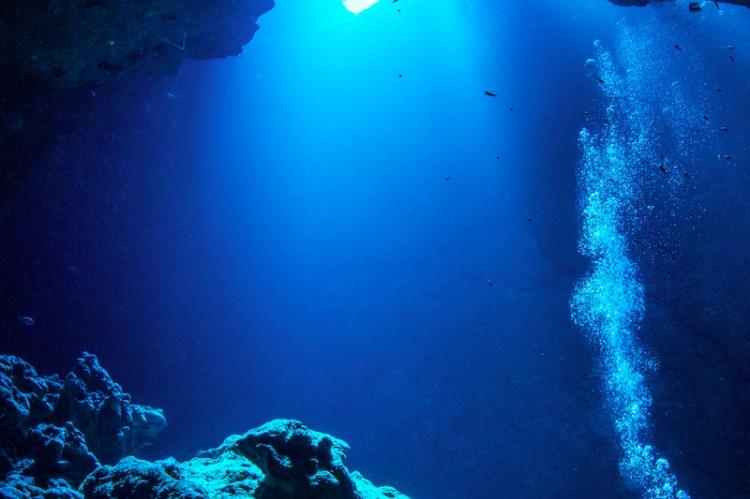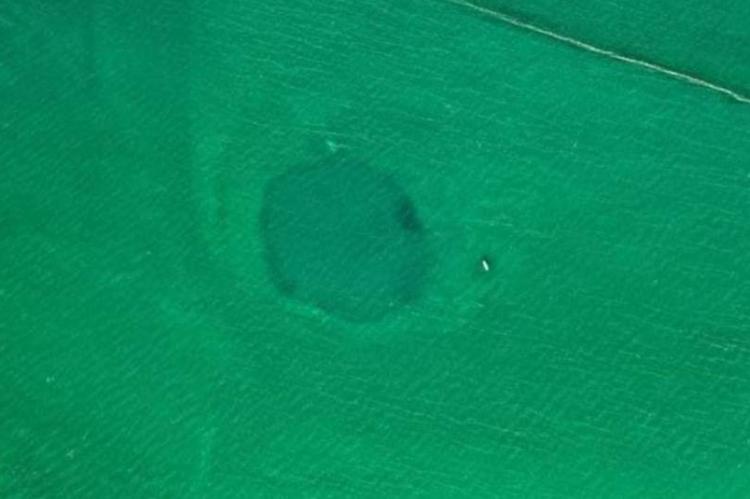"Exploring the Depths: Newly Discovered Taam Ja' Blue Hole in Chetumal Challenges Belize's Great Blue Hole for Dominance"
By: Omar Silva, NP Staff Writer
Belize City: Wednesday, 8th March 2023
Scientists from "El Colegio de la Frontera Sur (Ecosur)" and the "National Council of Science and Technology (Conacyt)" have recently announced the discovery of the second largest blue hole in the world in Chetumal, Quintana Roo, Mexico.
The sinkhole, named Taam Ja', is approximately 274 meters deep and has an area of 13,690 square meters. Its steep walls have an inclination of 80 degrees, giving it the shape of a large cone, and it is covered with limestone, biofilms, and sediments. The blue hole is located in the Chetumal Bay, which is characterized by being shallow (from 6 to 10 meters), making the presence of the deep hole all the more unique.
The discovery of Taam Ja' is of great importance in the world of research, as these types of formations are associated with the changes known as "glacio-eustatics" that occurred in the Yucatan Peninsula. Scientists believe that the blue hole can provide valuable information about what life on Earth was like millions of years ago, making it a valuable natural wonder.
The discovery has been attributed to researchers from the Colegio de la Frontera Sur (Ecosur) Chetumal campus, who made the finding in 2021 but only recently announced it. The blue hole is now the second deepest in the world, displacing Dean's Blue Hole of the Bahamas to third place, which is 202 meters deep. The discovery has generated interest and excitement, especially among those interested in geology and marine biology.
It is worth noting that the Chetumal Bay is home to the Mayan train, which covers the area, but the blue hole is not affected by the transportation system. The location of Taam Ja' in the bay also means that it is an inlet of the Caribbean Sea that extends to Belize.
The newly discovered Taam Ja' blue hole in Chetumal, Mexico, is the second deepest in the world, with a depth of approximately 274 meters. In comparison, Belize's Great Blue Hole, located near the Lighthouse Reef within the Belize Barrier Reef Reserve System, has a depth of around 124 meters, making it significantly shallower than Taam Ja'. The Great Blue Hole has a diameter of approximately 300 meters and is a popular destination for scuba divers and tourists.
While both blue holes are impressive natural wonders, Taam Ja' is deeper than the Great Blue Hole and has a unique location within the Chetumal Bay. Additionally, Taam Ja' has only recently been discovered, which means that there is still much to learn about this remarkable natural formation. Both blue holes offer important scientific insights into the history and geology of the region and are valuable resources for researchers studying marine ecosystems.
The newly discovered Taam Ja' blue hole in Chetumal, Mexico, and Belize's Great Blue Hole are both impressive natural wonders located in close proximity to each other. While Taam Ja' is deeper than the Great Blue Hole, with a depth of approximately 274 meters compared to the Great Blue Hole's 124 meters, the latter has a larger diameter of around 300 meters and is located within the Belize Barrier Reef Reserve System.
Both blue holes are important resources for researchers studying marine ecosystems, and they offer valuable scientific insights into the history and geology of the region. The Great Blue Hole, in particular, is a popular destination for scuba divers and tourists, attracting visitors from all over the world.
The discovery of Taam Ja' is of great significance, as it is the second deepest blue hole in the world and is located in the Chetumal Bay, which is an inlet of the Caribbean Sea that extends to Belize. The discovery offers important scientific insights into the changes known as "glacio-eustatics" that occurred in the Yucatan Peninsula, providing researchers with valuable information about what life on Earth was like millions of years ago.
In conclusion, the discovery of the second largest blue hole in the world in Chetumal is a natural wonder of great importance and interest to researchers in the fields of geology and marine biology. Its unique location and size make it a valuable source of information about life on Earth millions of years ago, and it is sure to generate more interest and excitement as more research is conducted on this natural wonder.
- Log in to post comments



